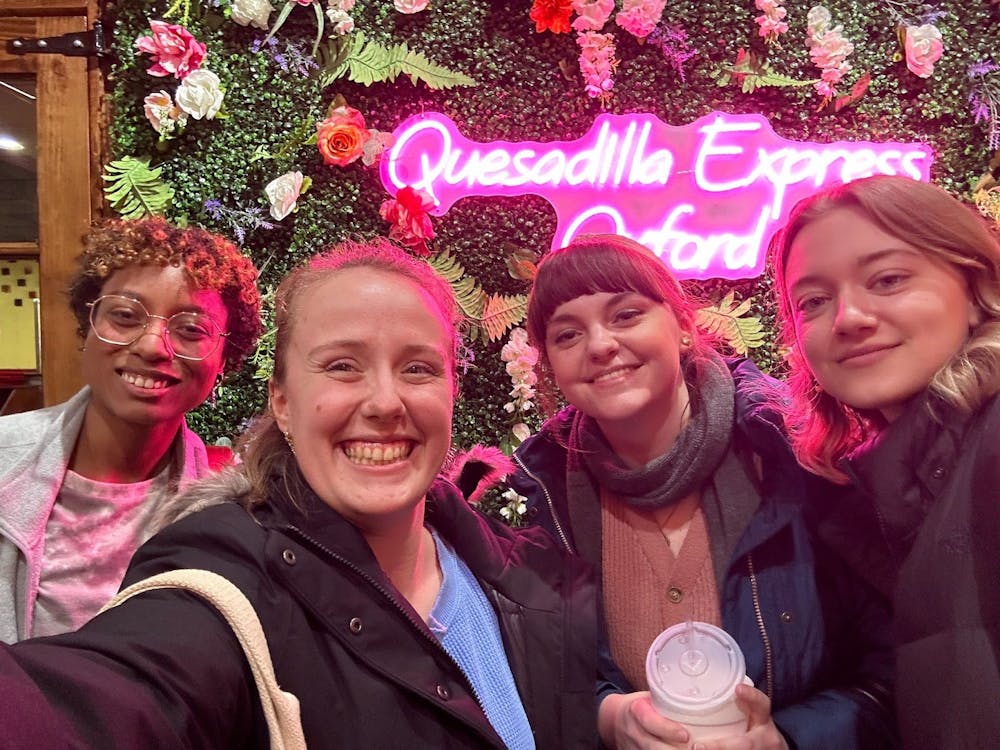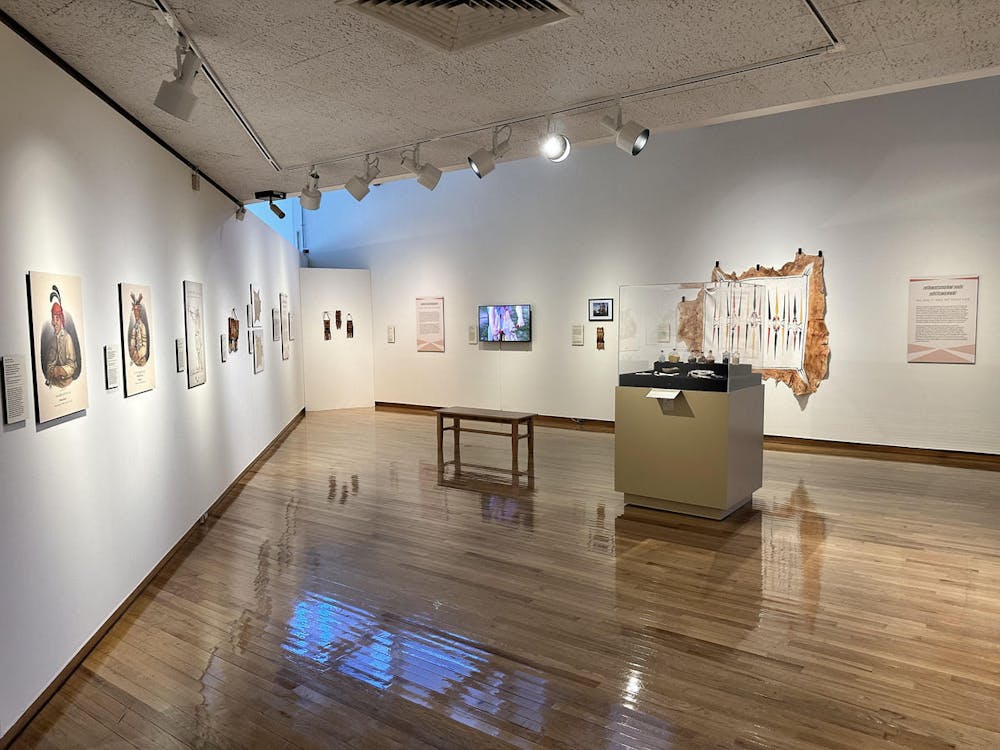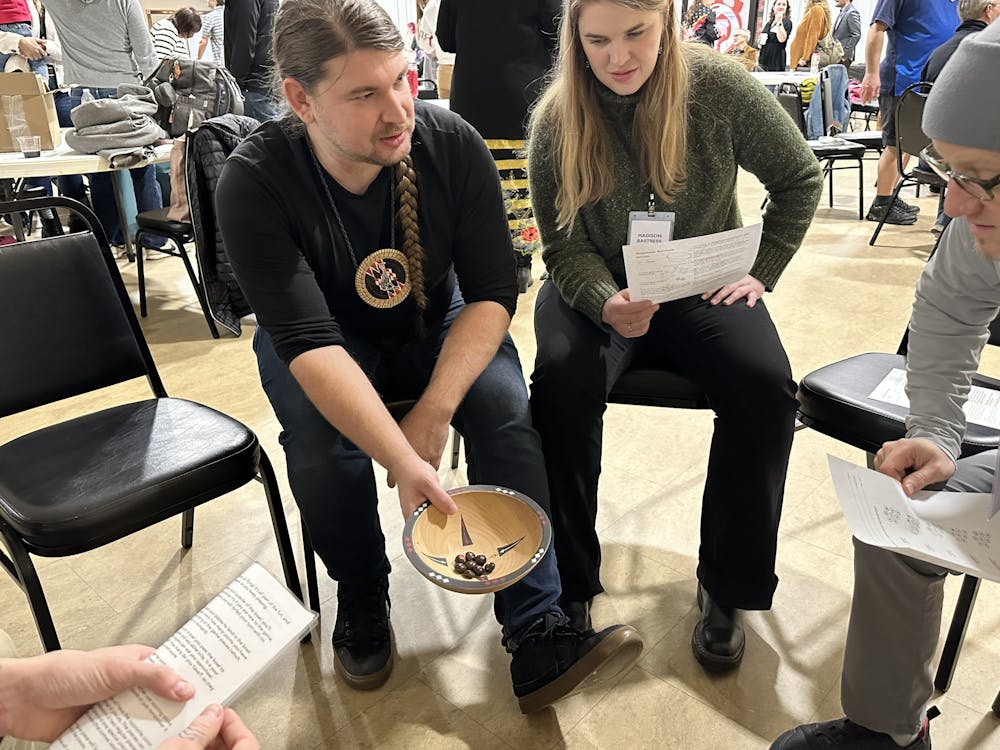
Neepwaantiinki: we learn from each other. This phrase is at the heart of the new Miami Heritage Logo (MHL), an image created through collaboration between Miami University and the Myaamia tribe. The logo is meant to raise awareness and interest about the relationship between the two communities, a relationship that too often goes unnoticed on Miami's campus.
In 1846, the Myaamia people were forced to leave the homeland that the university now occupies, and it was not until the 1970s that the two entities began to form a partnership. Over 120 Myaamia tribe members have attended Miami since 1991, with 31 Myaamia students currently enrolled.
The Myaamia Center, established on campus in 2001, does research for the tribe and provides support for Myaamia students. Every year, members of the university make two trips to the tribe's current home in Miami, OK to attend cultural events.
"What goes on here is very unique," said Bobbe Burke, coordinator for Miami Tribe relations at the center. "We're not aware of any other university that has an element like this...it represents a lot of trust."
Despite the tribe's distant location, the Myaamia people are able to feel connected to the school through correspondence such as the Miami Nation News, or aatotankiki myaamiaki, a paper that is produced by the Miami Tribe of Oklahoma and distributed to all Myaamia households.
In Oxford, however, this connection is not often reciprocated because it is just one element among many on campus. Burke and her peers want to do a better job of creating a strong awareness about the tribe, she said.
The Miami Heritage Logo, revealed to Miami students and faculty in an email co-signed by President Crawford and Miami Tribe Chief Douglas Lankford, is part of a joint agreement between the tribe and the university that was signed on Oct. 21 and celebrated with a ceremonial coin toss at the football game that day.
The platform was engineered largely by the Myaamia Center, as part of their ongoing mission to do "research on language and culture revitalization, the improved success of students who become familiar with their heritage, and other research on health, botany and language," according to the email.
The logo will be used on future promotional material and merchandise, and royalties from merchandise bearing the logo will be used for scholarships and support for Myaamia students enrolled at the university. Burke hopes the presence of the logo in the bookstore and around campus will pique students' curiosity about what it means and, by extension, prompt them to learn more about the university's connection to the Myaamia tribe.
As of right now, however, use of the logo is restricted to mostly web-based material, such as on the Myaamia Center's website and social media.
The logo uses colors and shapes to symbolize different aspects of the tribe-university relationship. It consists of a black diamond and a red diamond connected by a white diamond with a red circle in the middle of it. The black part represents the Myaamia tribe, their deep ties to their homeland, and their earned respect and wisdom. The red part stands for Miami University and its responsibility and commitment to gain and share knowledge. The white connection represents the tribe and university's shared vision, cooperation and the concept of neepwaantiinki. The red circle in the center symbolizes fire, or koteewi, and is meant to be the most significant element of all.
Enjoy what you're reading?
Signup for our newsletter
"If you have a fire, in order to keep it going somebody's got to tend it," Burke said. "That's what this is all about...this shared space that we have, we all have the responsibility to keep it going."
The making of the logo was a collaborative effort headed by Julie Olds, the tribe's Cultural Resources Officer, and designer Alyse Capaccio of University Communications and Marketing. Olds and Capaccio, along with members of the Myaamia Center, have worked on the project for about two years.
"Mostly, the guiding question was, 'What's an image that exemplifies the relationship but is also respectful and appropriate?'" said Olds. "There were a lot of voices that went into that."
The final image is inspired by the Myaamia tradition of ribbonwork, an art form that predates European contact. Because most traditional ribbonwork patterns are family-oriented or have a specific meaning, Olds and her peers knew it was important to come up with something entirely unique that could be broadly used, but that still had a great depth of meaning.
"I don't know if it could be more ideal," Olds said. "I think it's very thoughtful."
arwinejk@miamioh.edu




